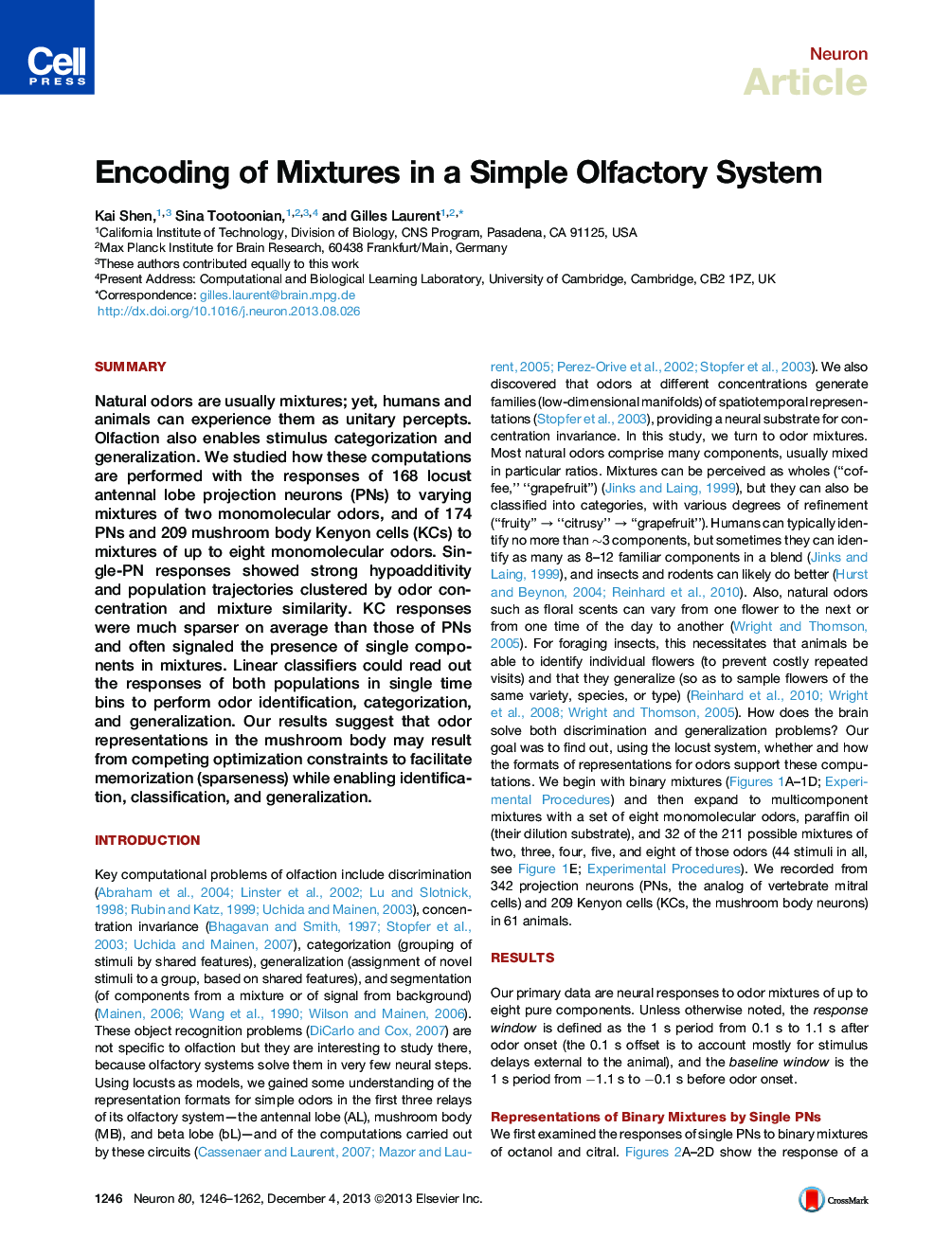| Article ID | Journal | Published Year | Pages | File Type |
|---|---|---|---|---|
| 4321282 | Neuron | 2013 | 17 Pages |
•We examined mixture responses of ∼550 PNs and KCs in the locust olfactory system•Single PNs showed hypoadditivity; population responses reflected odor similarity•Unlike PNs, many KCs signaled the presence of single-odor components in mixture•Linear decoding yielded odor identification, categorization, and generalization
SummaryNatural odors are usually mixtures; yet, humans and animals can experience them as unitary percepts. Olfaction also enables stimulus categorization and generalization. We studied how these computations are performed with the responses of 168 locust antennal lobe projection neurons (PNs) to varying mixtures of two monomolecular odors, and of 174 PNs and 209 mushroom body Kenyon cells (KCs) to mixtures of up to eight monomolecular odors. Single-PN responses showed strong hypoadditivity and population trajectories clustered by odor concentration and mixture similarity. KC responses were much sparser on average than those of PNs and often signaled the presence of single components in mixtures. Linear classifiers could read out the responses of both populations in single time bins to perform odor identification, categorization, and generalization. Our results suggest that odor representations in the mushroom body may result from competing optimization constraints to facilitate memorization (sparseness) while enabling identification, classification, and generalization.
